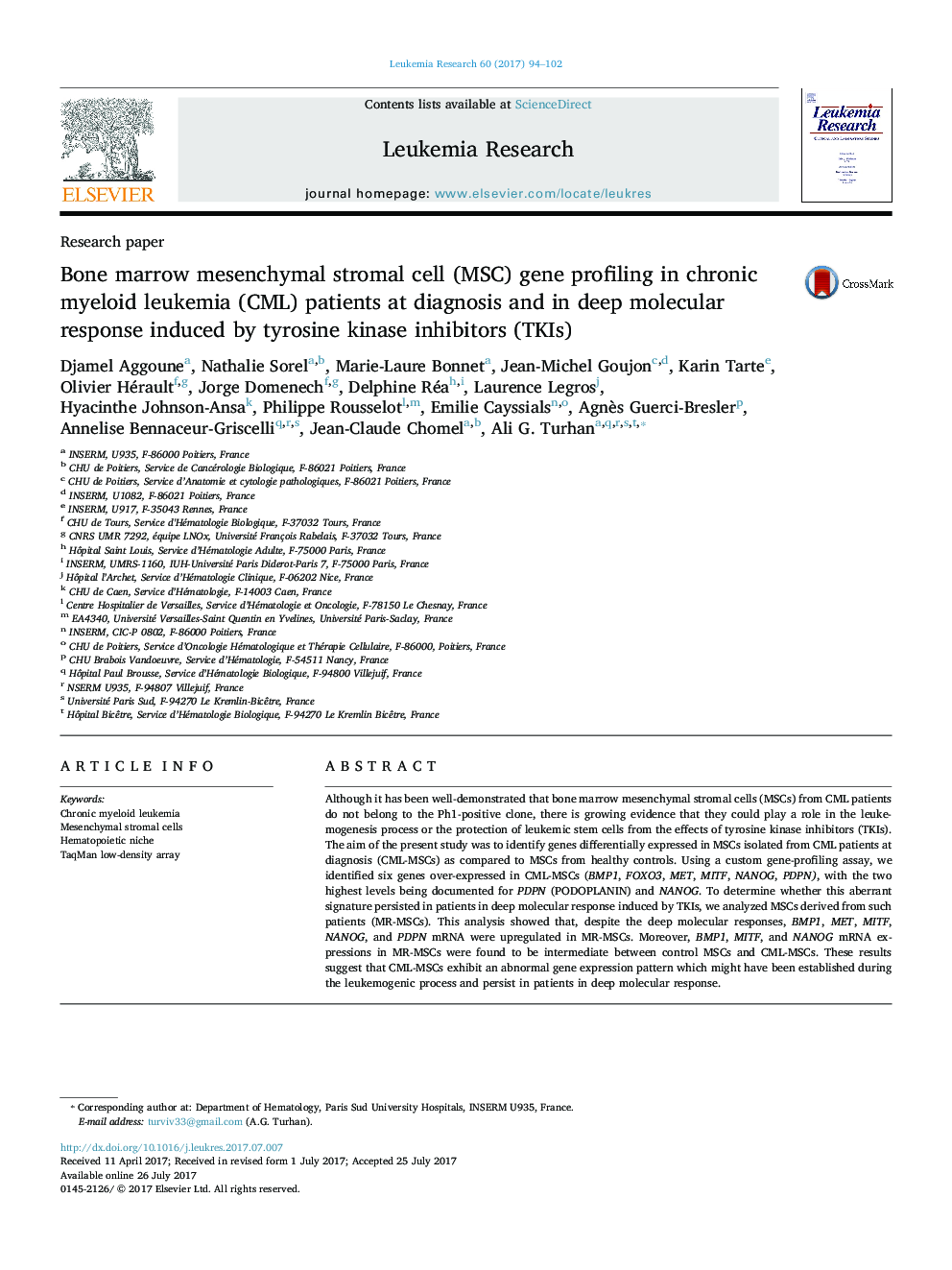| Article ID | Journal | Published Year | Pages | File Type |
|---|---|---|---|---|
| 5527725 | Leukemia Research | 2017 | 9 Pages |
â¢MSCs from CML patients exhibit a gene profiling pattern distinct from normal MSCs.â¢BMP1, MET, MITF, NANOG, and PDPN mRNAs are upregulated in MSCs from CML patients.â¢This molecular signature persists in MSCs from CML patients in molecular response.â¢Our results suggest the persistence of a “molecular memory” in CML microenvironment.
Although it has been well-demonstrated that bone marrow mesenchymal stromal cells (MSCs) from CML patients do not belong to the Ph1-positive clone, there is growing evidence that they could play a role in the leukemogenesis process or the protection of leukemic stem cells from the effects of tyrosine kinase inhibitors (TKIs). The aim of the present study was to identify genes differentially expressed in MSCs isolated from CML patients at diagnosis (CML-MSCs) as compared to MSCs from healthy controls. Using a custom gene-profiling assay, we identified six genes over-expressed in CML-MSCs (BMP1, FOXO3, MET, MITF, NANOG, PDPN), with the two highest levels being documented for PDPN (PODOPLANIN) and NANOG. To determine whether this aberrant signature persisted in patients in deep molecular response induced by TKIs, we analyzed MSCs derived from such patients (MR-MSCs). This analysis showed that, despite the deep molecular responses, BMP1, MET, MITF, NANOG, and PDPN mRNA were upregulated in MR-MSCs. Moreover, BMP1, MITF, and NANOG mRNA expressions in MR-MSCs were found to be intermediate between control MSCs and CML-MSCs. These results suggest that CML-MSCs exhibit an abnormal gene expression pattern which might have been established during the leukemogenic process and persist in patients in deep molecular response.
